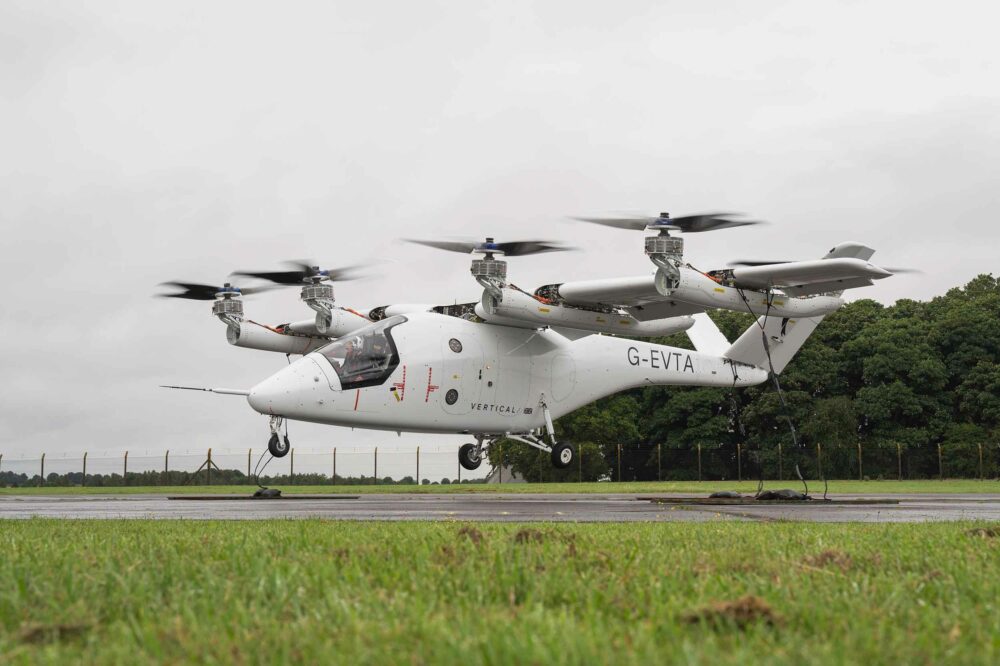UPDATE Bristol-based Vertical Aerospace has begun tethered flight tests of its second full-scale prototype of its VX4 electric take-off and landing vehicle (eVTOL).
UK’s Vertical begins testing next-gen VX4 eVTOL prototypeThe VX4 performed a piloted flight while loosely tethered to the ground, during which Vertical measured over 20,000 flight and system parameters to verify thrust, handling qualities and system performance.
The tethered piloted flight took place after the UK Civil Aviation Authority (CAA) had issued Vertical with a Permit to Fly for its VX4 prototype, having evaluated the engineering, design, test data and aircraft, effectively conducting a “mini certification” programme of the aircraft.
Previously, at last week’s Farnborough International Airshow, Vertical announced initial ground tests had started. The tests include propeller balancing and spinning tests to measure weight distribution of each propeller blade to ensure vibrations are minimised.
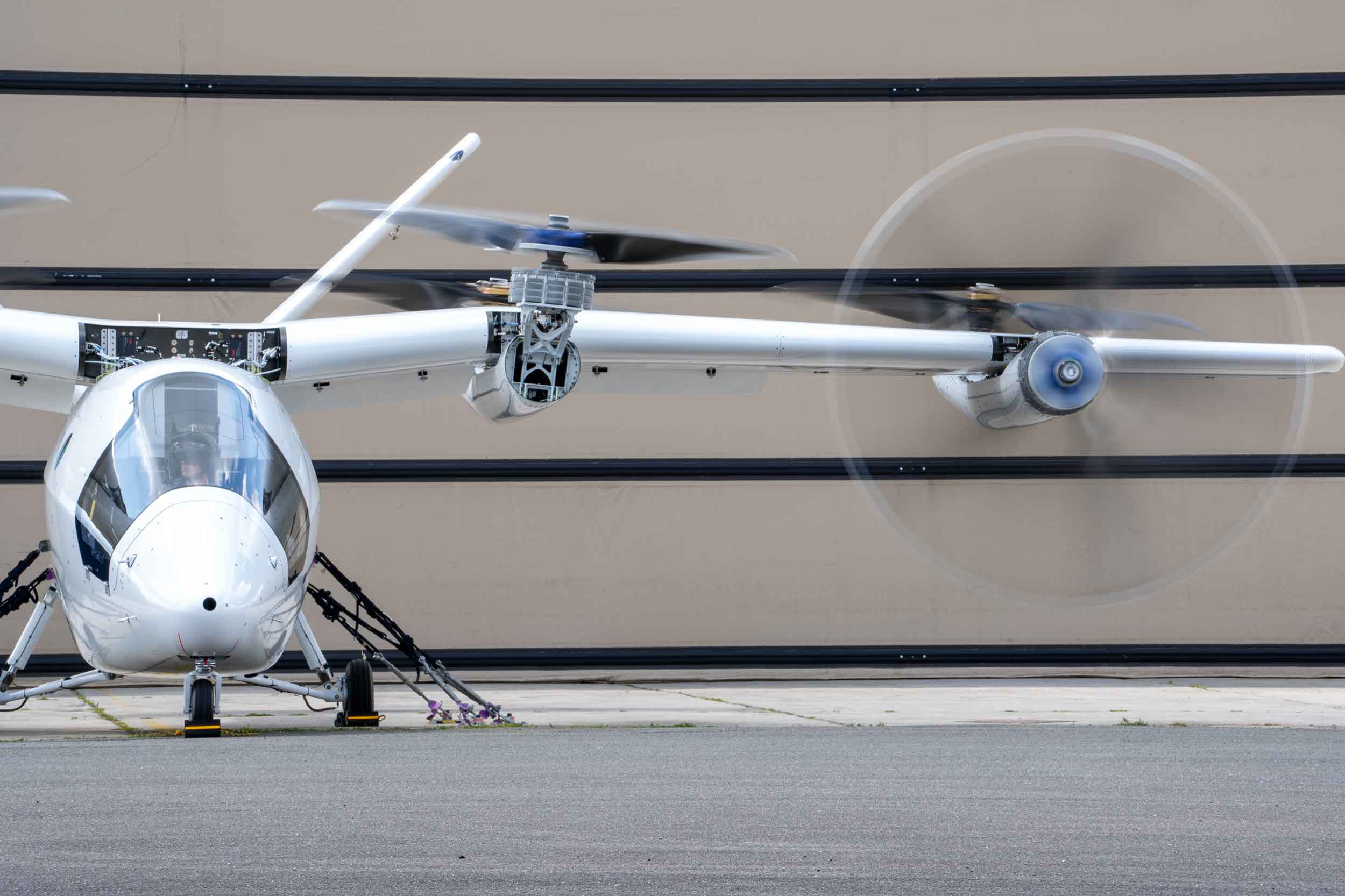
Vertical VX4 starts ground tests. Photo: Vertical Aerospace
Over the coming days, the company will conduct powered, propulsion system testing of its most advanced powertrain, which includes proprietary battery packs capable of producing 1.4 MW of peak power and has been designed and built to certification safety standards at its multi-million-pound Vertical Energy Centre.
David King, Chief Engineer, Vertical, said, “These tests are a crucial step forward in our mission to certify the VX4 and make a cleaner, quieter, and safer way of air mobility a reality.
“Every day we are seeing amazing progress from the team at our Flight Test Centre, each test providing valuable insights to help shape the next. We continue to work alongside our regulator to develop the safest and most advanced eVTOL aircraft in the world.”
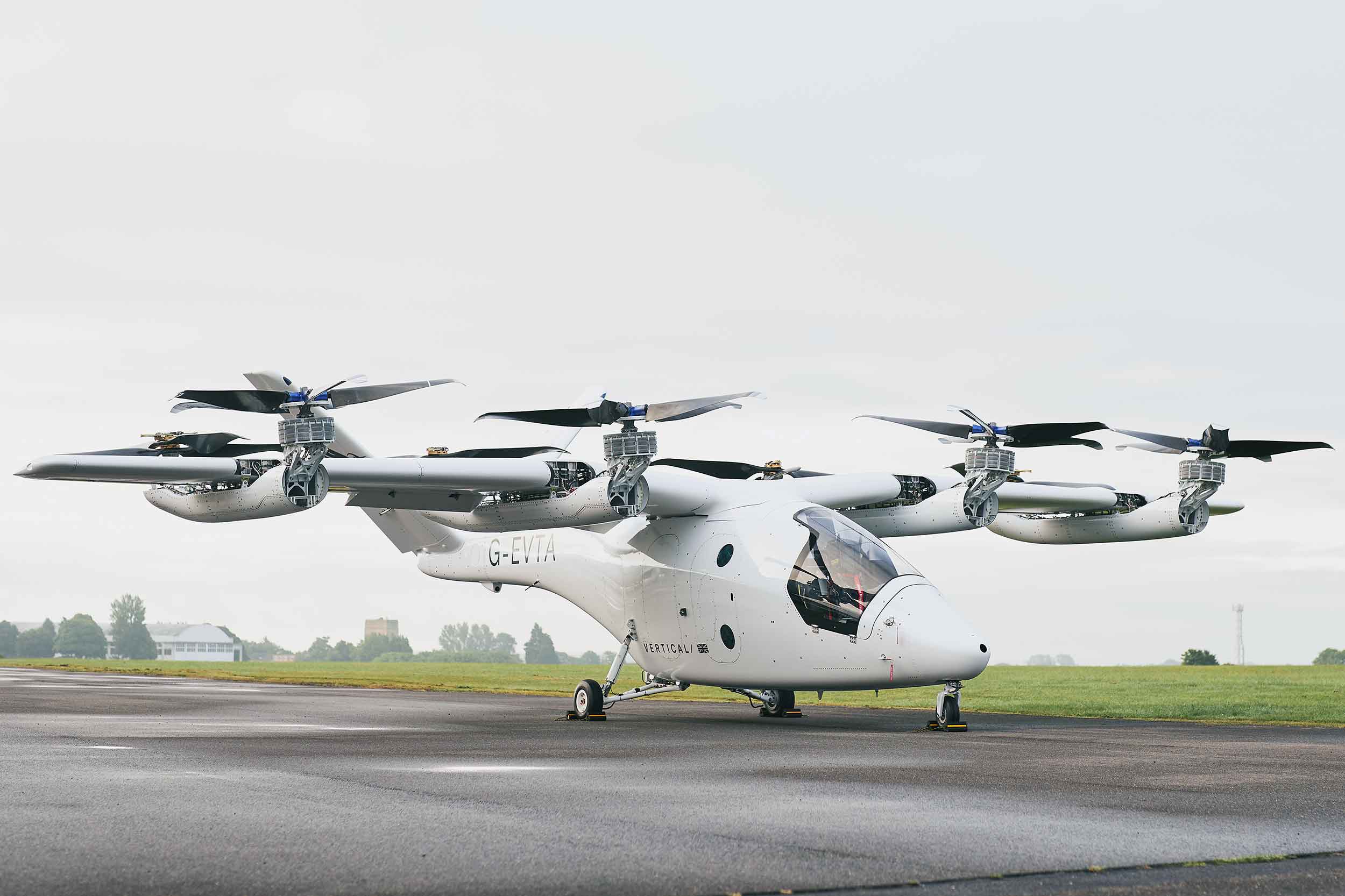
Latest full-scale prototype of the Vertical VX4 eVTOL. Photos: Vertical Aerospace
Vertical’s latest ‘next-generation’ VX4 has a 20% increase in the power to weight ratio over the previous full-scale prototype. This should enable the aircraft to reach speeds of up to the intended cruise speed of 150kt, said Vertical.
As well as the power boost, what’s noticeable about the second VX4 is the greater input from Tier 1 and 2 aerospace partners, including GKN Aerospace, Honeywell, Hanwha, Molicel, Leonardo and Syensqo.
It features Vertical’s next generation propellers and new proprietary battery technology, designed and manufactured at its state-of-the-art Vertical Energy Centre near Bristol.
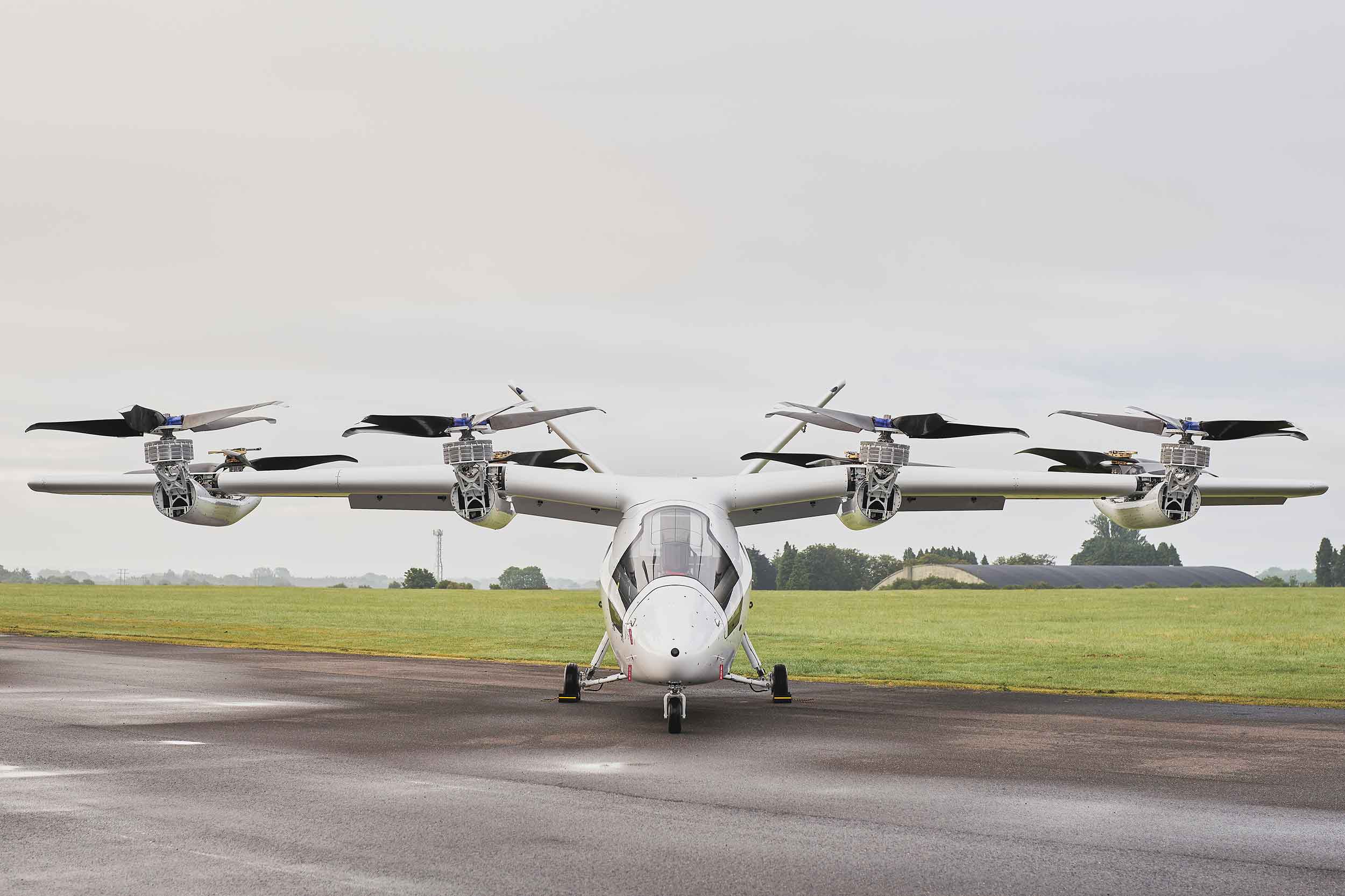
New propellers on the latest VX4
The new VX4 prototype has successfully completed systems and aircraft testing and commissioning, continued Vertical. The company is working closely with the UK CAA as it evaluates the engineering, design, test data and aircraft ahead of issuing a Permit to Fly.
Vertical will then begin a flight test programme at the Vertical Flight Test Centre, with a focus on achieving piloted flight.
Vertical is currently developing an identical full-scale prototype which will accelerate the VX4’s flight test programme and demonstration capability.
The first VX4 prototype was badly damaged in an incident in August 2023. The Air Accident Investigation Board (AAIB) concluded in its report the primary cause of the accident was due to an adhesive bond failure of a propeller blade. Vertical is now using a new design of propeller from a different supplier.
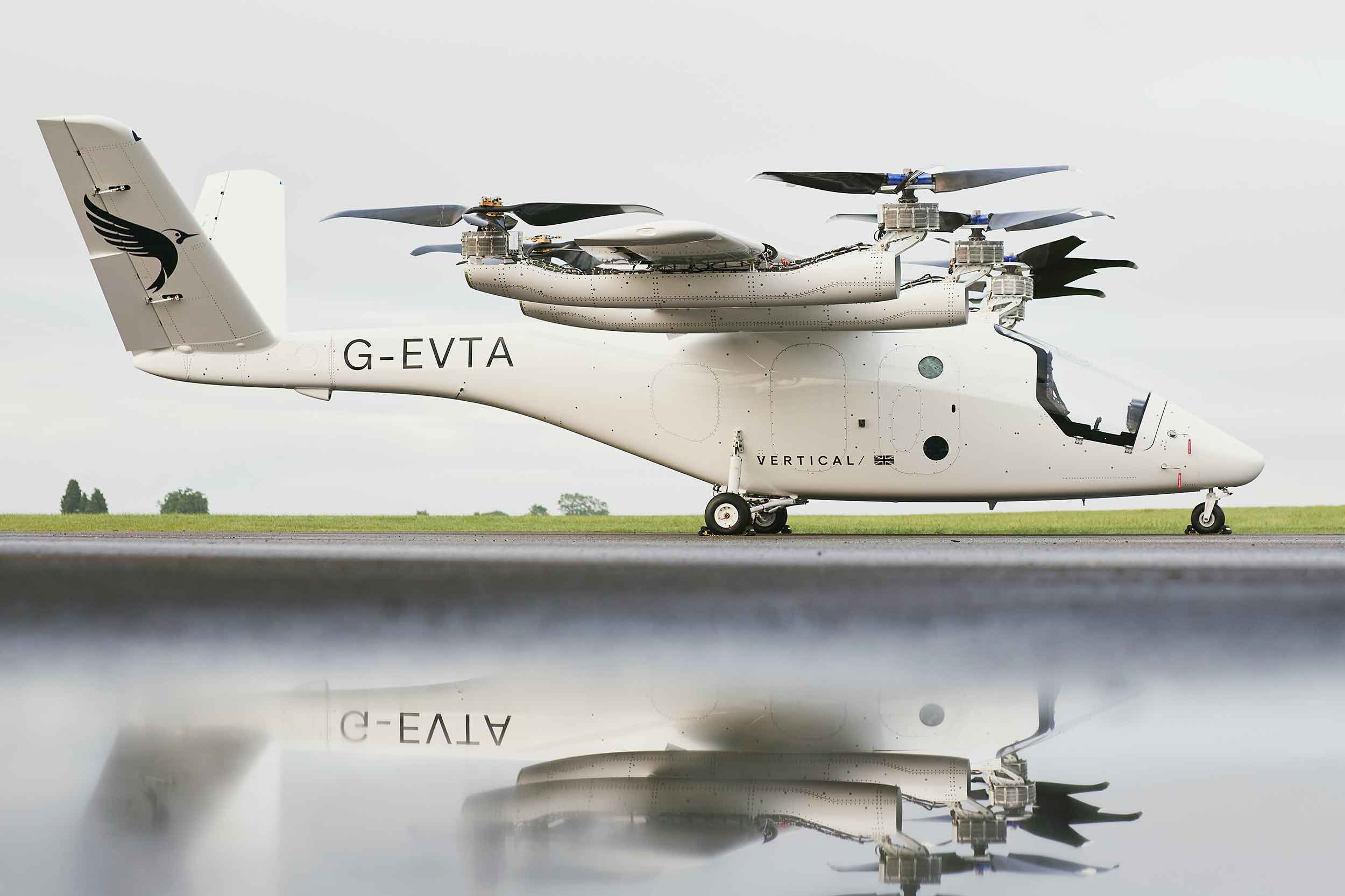
At least 60% of components are sourced from top aerospace suppliers
Key features of the latest VX4 prototype:
- Aerospace partner technology and certification expertise – 60% of the technology and components included on the latest aircraft are from world leading aerospace partners, up from 10% on the previous prototype.
- First use of battery designed and built for aviation – This battery and powertrain system, developed at the Vertical Energy Centre, is the most powerful and lightest yet, has rapid charge time and multiple backup power sources. The electronics, software and design of the battery have all been developed in house and the new aircraft includes new, more powerful Electronic Propulsion Units.
- Next generation propellers – Vertical’s new proprietary propellers designed specifically for eVTOLs are optimised for low noise and made of carbon fibre composite using a single-shot cure process to maximise integrity. The aerodynamic shape has been specifically designed to maximise performance across both hover and cruise by deconflicting the requirements of each phase of flight.
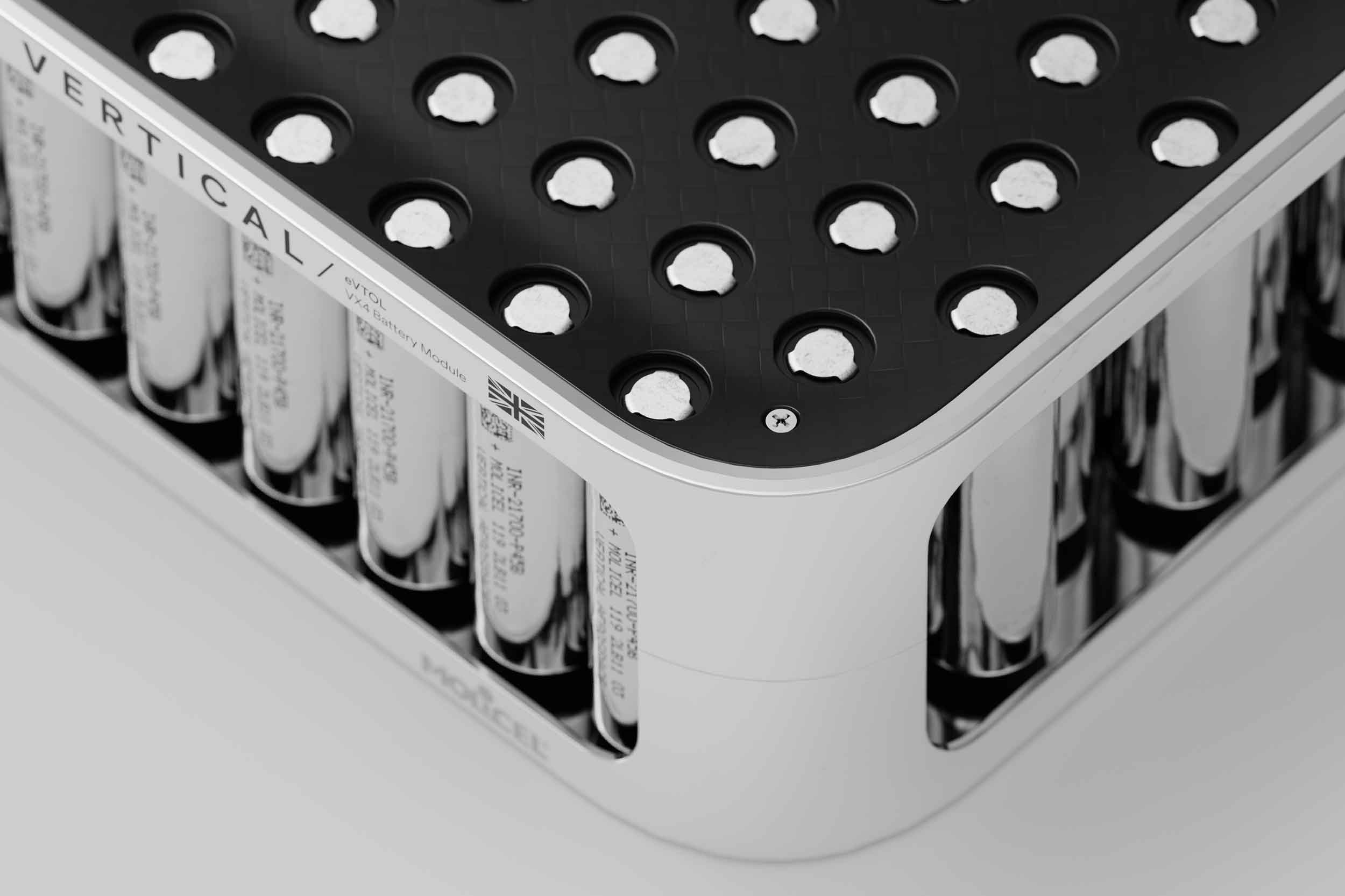
New battery system is key to VX4’s performance
Stuart Simpson, Chief Executive Officer of Vertical, said, “Our goal is to build the safest and most advanced aircraft in this new category of transport. With the new full-scale VX4 prototype, which has been built by combining our own world-leading technology with that from leading aerospace partners, we are well on the way to achieving that goal.
“This is a critical step on our road to certification and commercialisation and, while there is more to do, the support of our partners and our $6 billion order book shows the trust and confidence the industry has in our outstanding product.
“We are excited to start our robust, test flight programme at our Flight Test Centre as we continue our focus on achieving piloted flight.”
VX4 piloted flight test programme:
- Tethered: the VX4 will perform stabilised hover while loosely tethered to the ground.
- Untethered: the VX4 will hover without a tether.
- Thrustborne: the VX4 will take-off and land vertically and conduct low speed flight manoeuvres with lift generated by the propellers.
- Wingborne: the VX4 will take-off, fly and land like a conventional aircraft, with lift generated by the wing.
- Transition: The VX4 will transition between thrustbourne and wingbourne flight, and vice versa.
Vertical Aerospace


